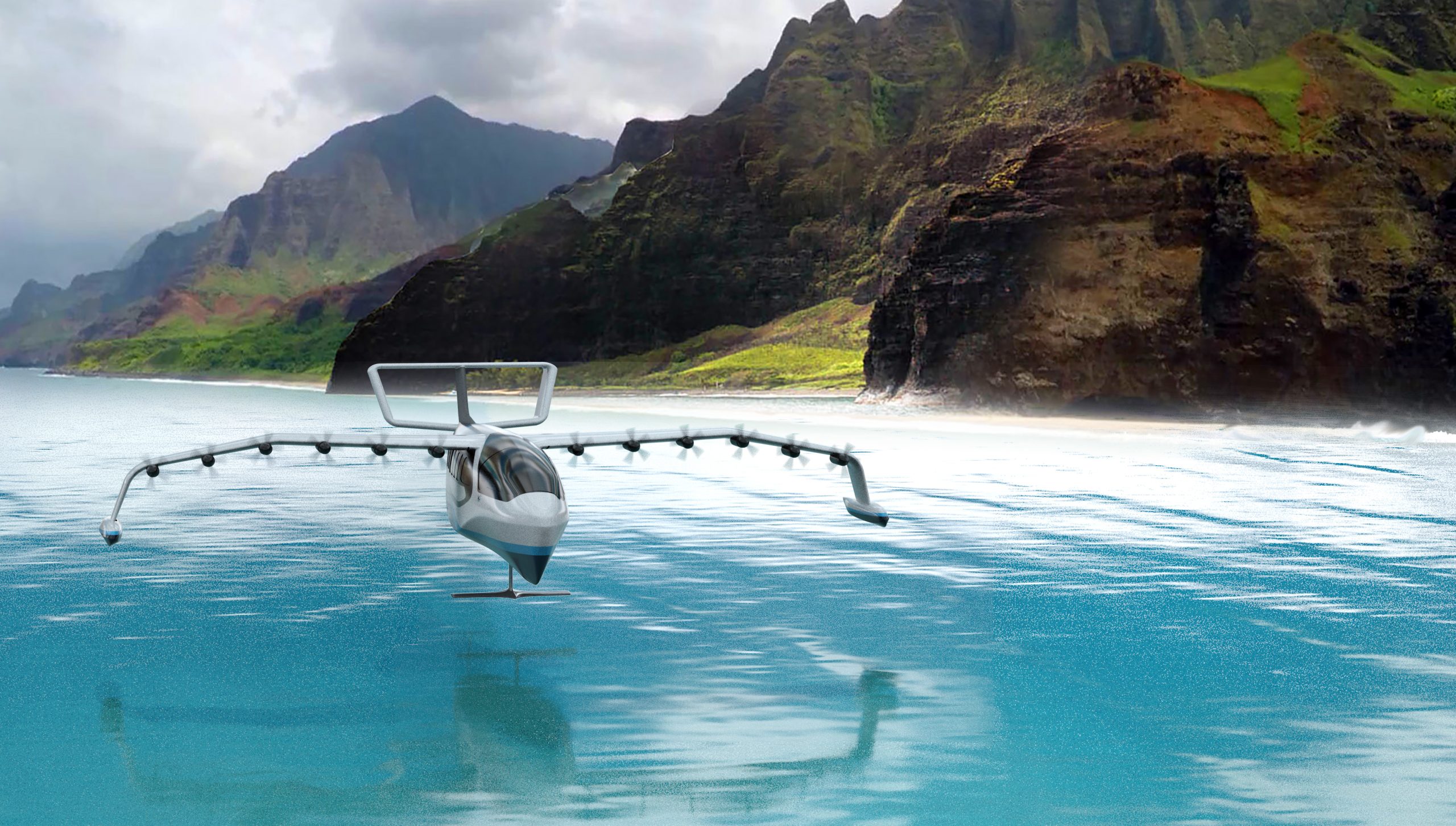
The Hawaiʻi Seaglider Initiative (HSI) has launched with a broad coalition committed to delivering affordable and accessible transportation option to Hawaiʻi communities. Seagliders are all-electric, zero-emission vessels that would operate exclusively over water at speeds up to 180mph, drastically reducing the time and cost of transporting people and freight between coastal communities. Seagliders operate by floating on a hull before transitioning to wave-tolerant underwater hydrofoils and ultimately taking flight at ultra-low altitudes, 30 to 60 feet above the water’s surface, according to an HSI press release
At launch, HSI members comprise more than a dozen corporate and community organizations, including: AES Hawaiʻi, Alaska Airlines, CNHA, Hawaiʻi Agricultural Foundation, Hawaiian Airlines, Hawaii Building & Constructions Trades Council, Hawaiʻi Lodging and Tourism Association, IBEW Local 1186, Japan Airlines, Makaha Cultural Learning Center, Maui Hotel & Lodging Association, Mokulele Airlines, Molokaʻi Chamber of Commerce, Pacific Current, Polynesian Adventure, Pulama Lanaʻi, REGENT Craft, Retail Merchants of Hawaiʻi, United Airlines, and Young Brothers.
“I commend the Hawai‘i Seaglider Initiative partners from the private, public and community sectors for working together to explore sustainable transportation technology that is in line with our climate change and clean energy strategies,” said Governor Josh Green, M.D. “This investment in our interisland transportation network will provide a renewable transportation alternative that will help keep our communities connected, support our local businesses and build a resilient economy for Hawai‘i.”
“We eagerly anticipate the transformative possibilities that seagliders bring to enhancing the well-being of individuals throughout Hawaiʻi, particularly our Molokai community. By offering an affordable and sustainable means of transportation, seagliders aim to facilitate improved access to healthcare and employment opportunities,” said Kuhio Lewis, CEO of The Council for Native Hawaiian Advancement (CNHA) and an advisor to HSI. “CNHA is excited to collaborate with HSI to ensure that the introduction of seagliders positively impacts and uplifts Native Hawaiians and communities across Hawaiʻi.”
HSI has also signed a memorandum of understanding with the Hawai‘i Department of Transportation (HDOT). HDOT is supportive of alternative forms of interisland transportation using renewable energy for passenger and freight services. The initiative will collaborate with HDOT and engage with other state and local government agencies to support the state’s 2045 decarbonization goals.
“The Hawai‘i Department of Transportation is proud to collaborate with the Hawai‘i Seaglider Initiative as part of the state’s long-term efforts to build resilience into our transportation systems,” said Hawai‘i Department of Transportation Director Ed Sniffen. “Seaglider technology has strong potential to provide an efficient, affordable, and renewable alternative form of interisland transportation for both passengers and freight. This memorandum of understanding will provide the framework for government, private and community stakeholders to work together in a thoughtful and coordinated approach to address the many environmental, cultural, economic, and technical components associated with integrating seaglider technology into our transportation network and infrastructure.”
“In 2024, HSI will continue to develop the socioeconomic and technical feasibility of establishing an inter-island and intra-island seaglider network in Hawaiʻi,” said the press release. “Through discussion groups and community engagement, members will focus on readying Hawaiʻi’s renewable energy and harbor infrastructure; addressing climate and environmental concerns to strengthen Hawaiʻi’s disaster preparedness and resiliency; training the next generation of high-paid skilled workers to support Hawaiʻi’s economy; and ensuring that local communities receive equitable access to and benefits from a seaglider network.
“Mokulele Airlines expects to be the first operator of seagliders anywhere in the world, having previously announced plans to accept delivery of a fleet of 12-passenger Viceroy all-electric seagliders manufactured by REGENT Craft by the middle of the decade.
Seagliders have substantially lower operating costs and simpler infrastructure requirements, making seagliders complementary to current interisland transportation options. Seagliders can be utilized to fill a variety of Hawaiʻi’s transportation needs, including:affordable Kamaʻāina transportation – because seagliders operate over water, they can more affordably connect rural communities to medical care, jobs, and other important services. A route feasibility study estimates a one-way seaglider ticket from Oʻahu to Maui or Oʻahu to Kauaʻi could cost USD30 – and lower costs for transporting essential goods. Seagliders can also be outfitted to transport cargo, including food and other essential goods between islands. Bringing down transportation and supply chain costs will help bring down the price of goods, increasing the purchasing power of Hawaiʻi residents.
For more information
(Image: HSI)

